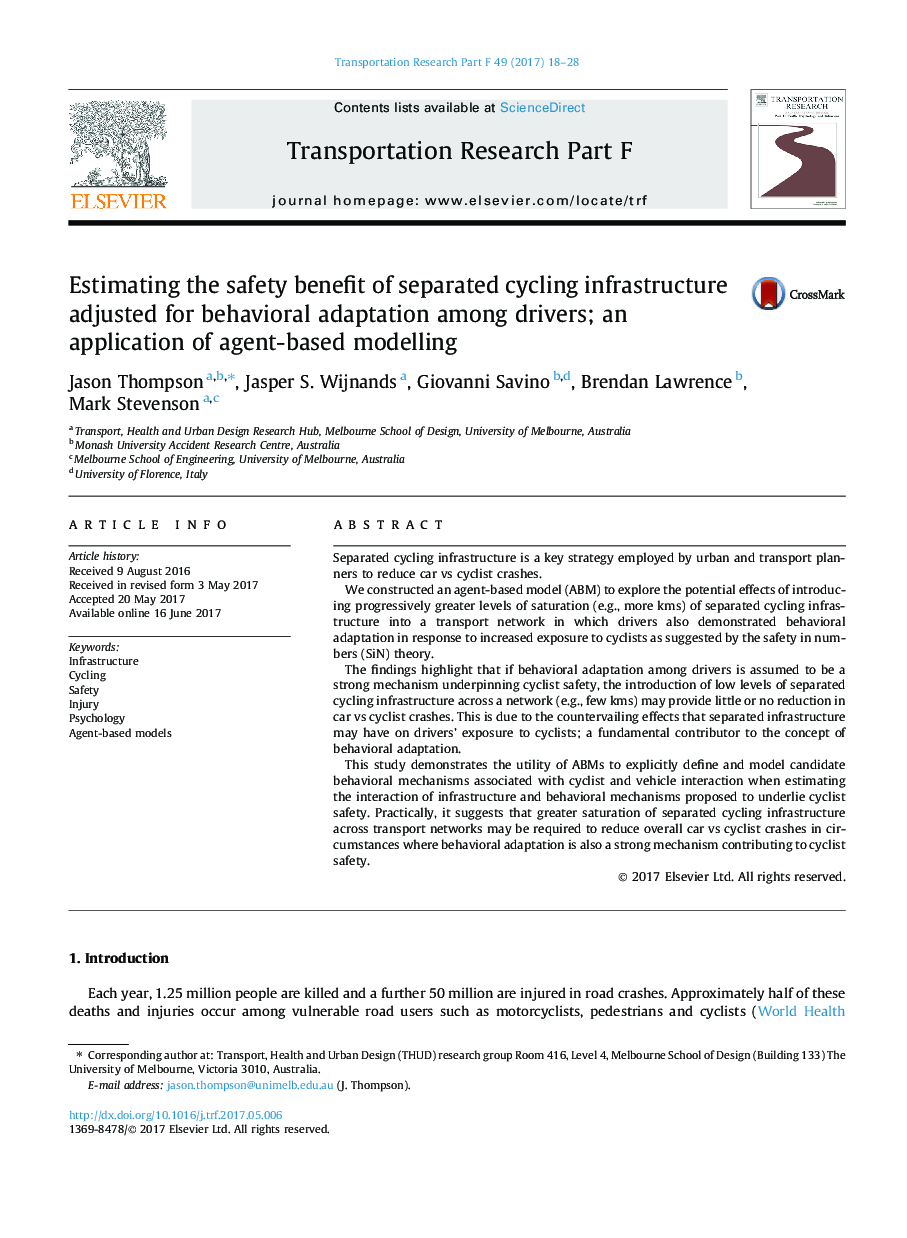| کد مقاله | کد نشریه | سال انتشار | مقاله انگلیسی | نسخه تمام متن |
|---|---|---|---|---|
| 5037275 | 1472437 | 2017 | 11 صفحه PDF | دانلود رایگان |
- Separated cycling infrastructure reduces crash risk exposure for cyclists.
- Behavioural adaptation among drivers works through increased exposure to cyclists.
- An agent-based model is presented, demonstrating the combined effect of both mechanisms.
- Infrastructure and adaptation may act against one another, increasing risk for on-road cyclists.
- Separated infrastructure may need to reach critical levels before safety benefits are realised.
Separated cycling infrastructure is a key strategy employed by urban and transport planners to reduce car vs cyclist crashes.We constructed an agent-based model (ABM) to explore the potential effects of introducing progressively greater levels of saturation (e.g., more kms) of separated cycling infrastructure into a transport network in which drivers also demonstrated behavioral adaptation in response to increased exposure to cyclists as suggested by the safety in numbers (SiN) theory.The findings highlight that if behavioral adaptation among drivers is assumed to be a strong mechanism underpinning cyclist safety, the introduction of low levels of separated cycling infrastructure across a network (e.g., few kms) may provide little or no reduction in car vs cyclist crashes. This is due to the countervailing effects that separated infrastructure may have on drivers' exposure to cyclists; a fundamental contributor to the concept of behavioral adaptation.This study demonstrates the utility of ABMs to explicitly define and model candidate behavioral mechanisms associated with cyclist and vehicle interaction when estimating the interaction of infrastructure and behavioral mechanisms proposed to underlie cyclist safety. Practically, it suggests that greater saturation of separated cycling infrastructure across transport networks may be required to reduce overall car vs cyclist crashes in circumstances where behavioral adaptation is also a strong mechanism contributing to cyclist safety.
Journal: Transportation Research Part F: Traffic Psychology and Behaviour - Volume 49, August 2017, Pages 18-28
